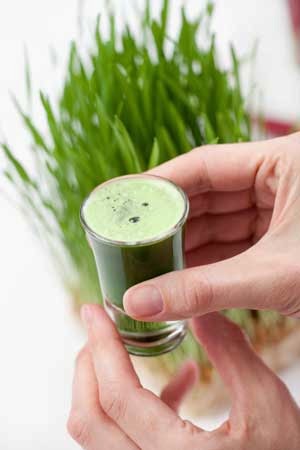The Health Benefits of Wheatgrass
Technically speaking, wheatgrass is wheat. It is a food derived from the common wheat plant. It is used to flavor a number of foods and drinks while it may also be used as medicine. It is used to treat numerous ailments and is also a green food. Green foods are organically grown with minimal synthetic pesticides and fertilizers, so they are better for you.
Wheatgrass comes from the cotyledons of the plant and is cultivated and harvested differently than other wheat in order to maximize its nutritional value and other great benefits.
What Does Wheatgrass Do?
Wheatgrass is a superfood, so it does a lot. It is one of those all-around feel-good foods that boosts your vitality, keeps you healthy and just makes you feel good in your day-to-day life. One of the big things wheatgrass does, is it increases production of hemoglobin, which is the specific chemical in red blood cells that is in charge of carrying oxygen. This obviously helps to oxygenate the body more efficiently, but it also promotes the healing of wounds and improves the body's ability to fight off bacteria.
Along with its major immune system boosting, wheatgrass will also help to cleanse your body. It removes substances like heavy metals and even deposits from drugs from your liver as well as from your blood. It also acts as a mild diuretic, so it will clear out your urethra, bladder and prostate. On top of all these properties it also has anti-inflammatory properties as well, making it great to ease mild pain.
Who Should Take Wheatgrass?
Everyone can benefit from taking wheatgrass at least to give their immune system a jump start. It is also a concentrated source of lots of vitamins, amino acids and minerals such as vitamin A, C, E, iron, calcium and magnesium. This makes it excellent for anyone health conscious and aiming to eat a properly balance and nutrient-rich diet.
People that will experience added benefits are those who suffer from diabetes or other blood sugar disorders. Also people with high blood pressure and high cholesterol. It is also an ideal component of any body detox or cleanse. It relieves the symptoms of the common cold as well as arthritis. If you have a urinary tract or bacterial infection, wheatgrass can be used as an alternative treatment alongside conventional medication.
Wheatgrass Side Effects
You can reap the benefits of wheatgrass with little to no side effects. It is safe when taken in food as well as medicinal amounts. It may result in nausea, constipation and weight loss in some people, but this not highly likely. For the most part, wheatgrass is considered to be largely free of side effects.
Types of Wheatgrass and How to Take Them
Wheatgrass is most commonly found in either a liquid or a powder form, but there are wheatgrass supplement tablets available now as well. Liquid wheatgrass is often taken as a "shot." Most people take it in small, shot-sized doses and then chase it with another fruit juice. In its juice form, it is believed to contain the most nutrients and provide the most benefits.
Wheatgrass powder can be added in small amounts to juices or used in smoothies. It is highly concentrated, but the amount needed may vary from brand to brand. Because the powder form is more processed, it does lose a bit of the nutrient content - it is still good for you though and is more affordable than the juice. The tablet form is convenient if you do not enjoy the taste of wheatgrass, but you do enjoy its benefits.
The amount of wheatgrass you should take depends on a lot of different factors. Your age, health and pre-existing conditions need to be taken into consideration as well as the reason you want to take wheatgrass. To get the proper effects it is important to read and follow any instructions on the label of any types of wheatgrass.
Wheatgrass and the Government
Currently, the government has very little to say about wheatgrass. It is currently the subject of a great deal of scientific research, but so far it has a huge list of benefits and essentially no side effects. For these reasons, there are no regulations regarding wheatgrass or its cultivation.
It is possible to grow your own wheatgrass, even indoors. You need a special food processor to obtain the juice, but this is also perfectly legal as well. Give wheatgrass a try if you are looking to add a little something to your diet.
Dr. Donna Sergi,
Brooklyn Chiropractor
Chiropractor-in-Brooklyn.com




Comments
Post a Comment